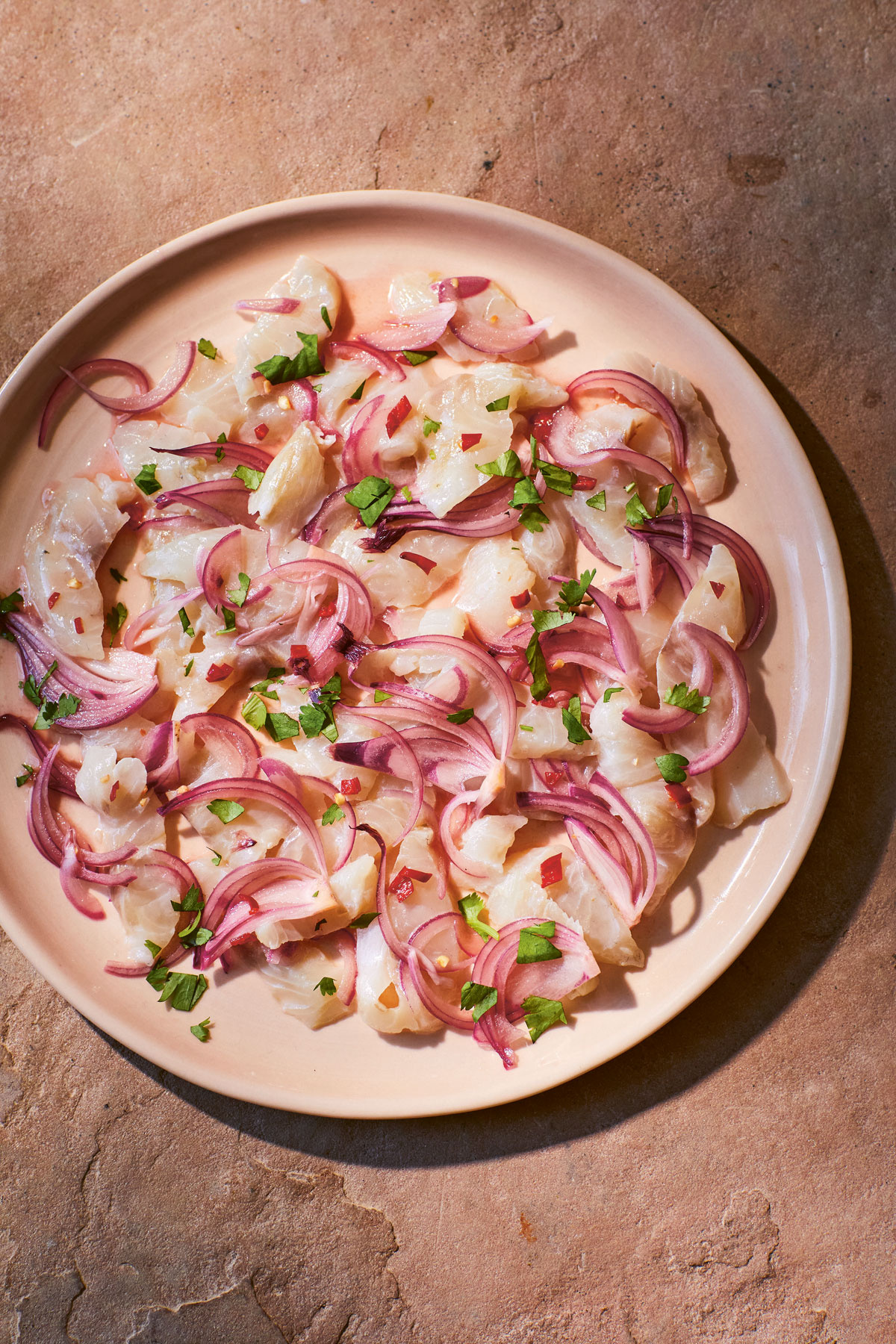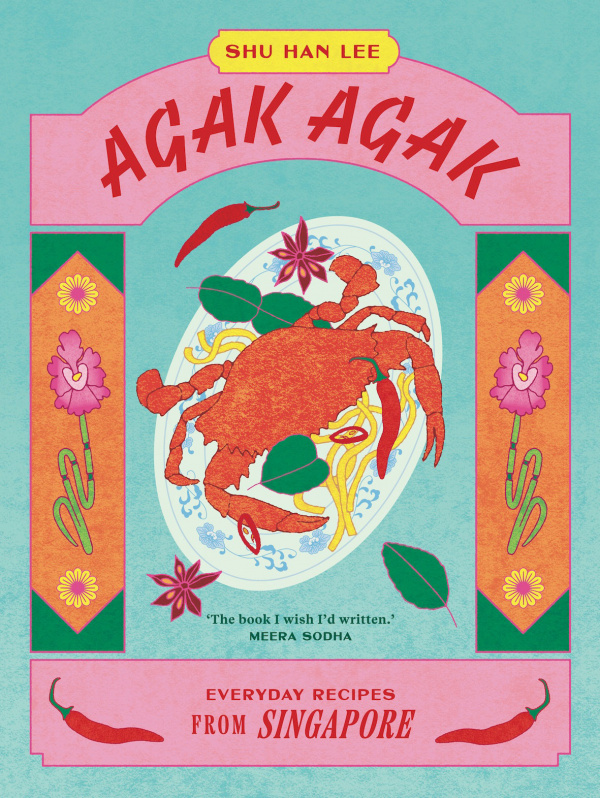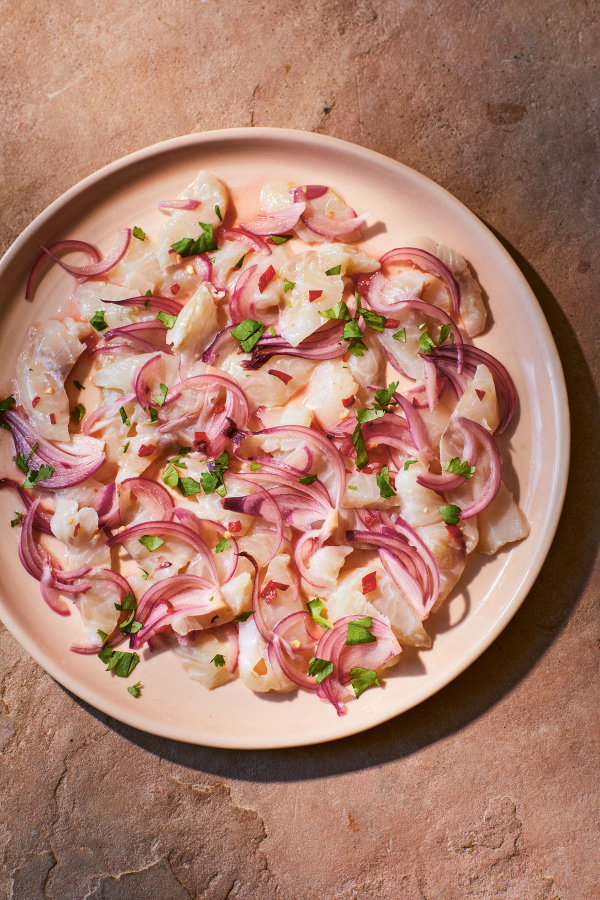 Photo by Ola O. Smit
Photo by Ola O. Smit
I have a terrible confession to make: even though I go to Australia regularly, often changing planes in Singapore, I have never actually left the confines of the airport. Madness, I know. Judging from the glorious variety of the Singaporean food I’ve eaten in my life outside of the country, I am fully aware of how much pleasure I am depriving myself by not using the opportunity for a bout of greedy food tourism. The trouble is, it takes such a long time to get to Australia in the first place that it’s hard to grab any extra hours en route. But it’s stupid and it’s wrong, and it needs to be remedied. Still, until that time, I am very happy indeed to have Shu Han Lee’s Agak Agak in my kitchen, even if it makes me even more aware of the error of my ways.
‘Agak Agak’ (the ‘k’ is silent) is a term which, as the author explains in the book’s introduction, "loosely translates 'to estimate’”; that’s to say, it denotes a way of cooking that relies on using instinct, context and palate in deciding quantities as you cook. (It also happens to be the title of Sham Hanifa’s little book on Malaysian food, to be published by the estimable Blasta Books on the 25th of this month.) In a sense, this is the nature of all cooking really, but more pronounced food cultures are certainly the most at ease with it. I love the way that Italians, for example, often have “qb” written as the amount for any particular ingredient in a recipe, this being an abbreviation for “quanto basta” which translates roughly as “however much is enough” to mean “as much as needed”. I admit this can be alarming for inexperienced cooks, and anathema to many contemporary cookbook readers, who want rules, certainty and unquestionable precision from recipes. In truth, those are perfectly understandable requirements, and certainly Han Lee’s recipes are not vague suggestions that abandon you to your own devices in the kitchen. No, this book is an enthusiastic friend, ready to take you into the kitchen so that you can learn about this rich, multi-faceted culinary culture — at once so sophisticated and yet so boisterously earthy — for yourself.
Where should I start in trying to give you a taste of what lies beyond this book’s beautiful cover? Rather than list the recipes that I have earmarked for myself, I think it makes better sense to try and show you the types of dishes and the range of influences on offer. The book starts with an introduction to rice, its importance in Singapore, and a streamlined selection of recipes — I was lyrically inspired in particular by the Pandan Jasmine Rice, and have been trying to stop myself buying fresh Pandan leaves online before I finish writing this! — that might go with the dishes that follow. These include 8-Hour Ox Cheek Rendang; Peranakan Prawn and Pineapple Curry; Meatball Soup with Lettuce and Fried Ginger; Green Beans with Turmeric and Toasted Coconut; Steamed Egg Custard; Salt and Pepper Crispy Roast Pork Belly; Drunken La La — which are clams — with Rice Wine, a dish I’m particularly drawn to not just because I love clams, but because I’m called Lala by my family, so this title amuses me (and them); Hainanese Chicken Rice; Katong Curry Laksa; Chilli Crab Spaghetti, an easy, homestyle version; Torn Noodles with Poached Egg and Watercress; BBQ Chicken Satay with Tamarind Peanut Sauce; Quick Kaya, aka Pandan Coconut Jam of Dreams; and Black Sticky Rice Pudding with Rhubarb. And I’ve barely scratched the surface! The recipe I’m very happy to be sharing with you today is perhaps the simplest in the book, though exquisite with it: Lime-Cured Fish with Chilli Padi and Pink Onions.
Extracted from Agak Agak, by Shu Han Lee (Hardie Grant Books £26).
Photography by Ola O. Smit.






